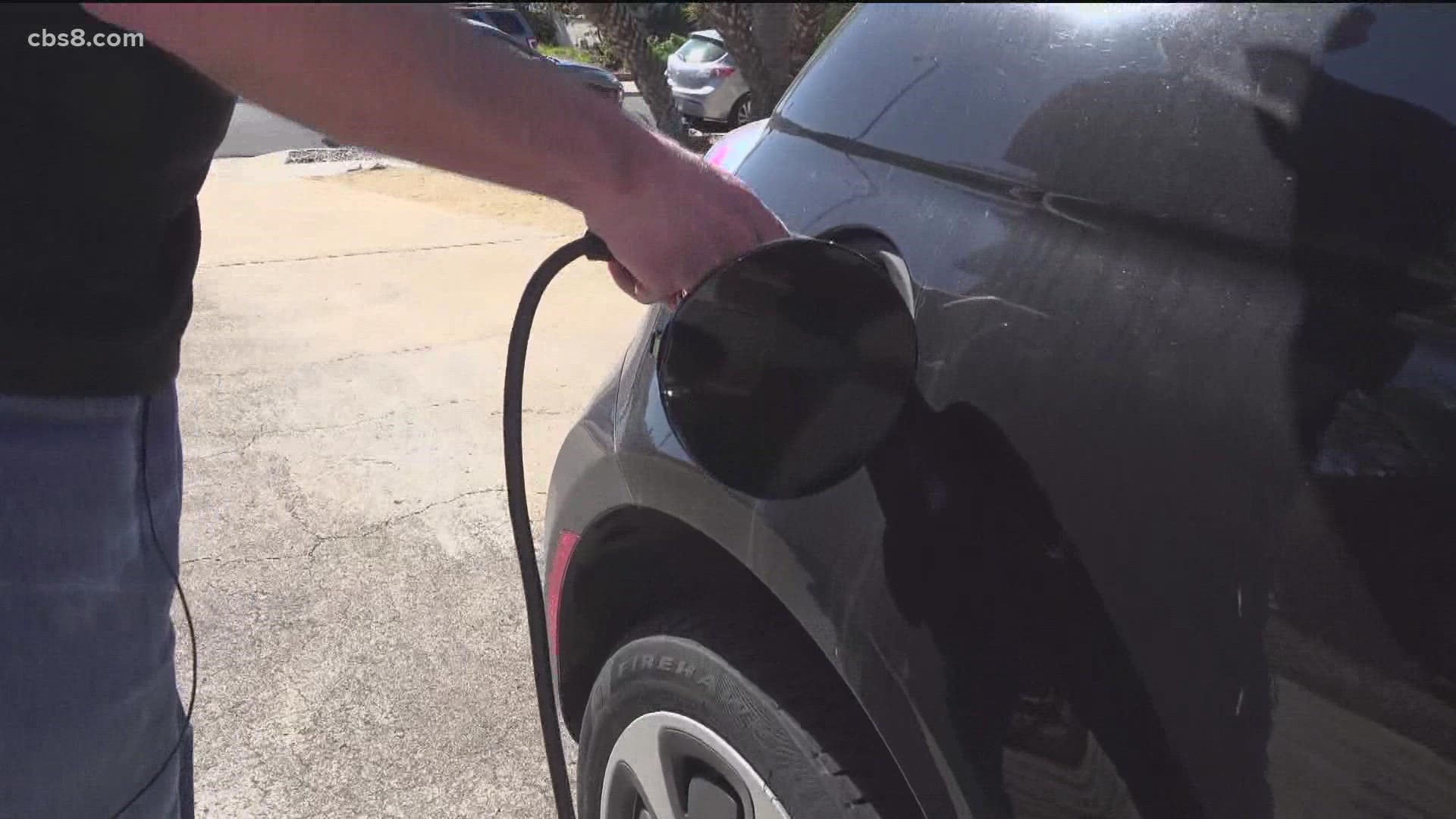SAN DIEGO COUNTY, Calif. — We’ve received a huge response from CBS 8 viewers concerning our recent report comparing the cost to drive a gas vehicle versus an electric vehicle.
These questions are sure to keep coming up as California shifts to all-electric vehicles in coming years.
In our previous report, we drove 10 miles in both a gasoline and an electric vehicle, costing us $2.54 in gas for a Hyundai Kona, and $1.05 in electricity for a Fiat 500 EV.
After driving 10 miles, it took 2.88 hours to recharge the Fiat with a charging rate of one kilowatt per hour.
“So, it took almost 3 hours to fully recharge for 10 miles? What if you wanted to visit family in Vegas?” viewer Larry S. posted on CBS 8’s Facebook page.
“It was good that you used the everyday price for electricity for your test, because when CA has millions of electric vehicles charging at night, that will be the peak hour time,” David S. wrote in an email to CBS 8. “And we all know the utilities raise the rates during times of maximum use.”
“If electric cars do not use gasoline, they will not participate in paying a gasoline tax... to help to maintain our roads and bridges,” Bill B. posted.
"Speaking of 'costs' of ownership - For electric vehicles there is no maintenance of oil changes, fan belts, starters, alternators, catalytic converters, mufflers, spark plugs, and timing belts/chains, and the brakes last MUCH longer due to regenerative braking. Just buy tires and wiper blades LOL. The batteries are warranted for 10yrs, 150K miles in CA. But EVs cost more to purchase initially. $28K and up," CBS 8 viewer Steve K. posted on Facebook.
Several viewers posted comments like this one from Gavin B.: “The real question is will our electrical grid be able to handle millions of electric cars all charging?”
Cal-ISO, the state's electrical grid operator, estimates it will cost more than $30 billion over the next 20 years to upgrade the grid so it can handle millions of electric vehicles and all-renewable energy, in a draft report released earlier this month.
“If they are uncomfortable now with the increase in their electric bills, just wait. It's gonna get far, far more so,” said Gary Ackerman, an electric and utility expert with more than four decades of experience in the industry.
Ackerman said the $30 billion estimate to upgrade the state’s electrical grid did not include the 1.2 million EV charging stations estimated to be needed by 2030.
“My calculations indicate that over the next 20 years, average rates will go up for consumers more than double, maybe more like 140 percent,” said Ackerman.
One partial solution, Ackerman suggested, would be to allow the private sector to install and maintain the charging stations, as opposed to California’s investor-owned utilities.
“Certainly, the utilities are going to have to be ready to have a system that allows people to charge their vehicles at home,” said Ackerman. “I believe the best way to go is to have a competitive marketplace whereby private providers of charging stations can compete for the right to your business. Then, they take the risk.”
Last year, the California Public Utilities Commission (CPUC) issued a report that estimated SDG&E rates will continue to outpace inflation, and go up an average of 4.7% annually through 2030.
“Buckle up, we're about to see a lot more of that,” said Ackerman.
Another possible solution would be for the CPUC to reduce the allowed equity profit rates on capital investments made California utilities. Currently, SDG&E’s “return on equity” profit rate is set at 10.2%.
The utilities maintain their profit rates need to remain above the national average to attract capital investment and because of the high-risk nature of their business.
As CBS 8 previously reported, SDG&E is involved in an ongoing legal fight at the CPUC to keep its equity profit rate from automatically going down in 2022.
WATCH RELATED: Treasure hidden under the Salton Sea could be inside the next car you buy (February 2022)

